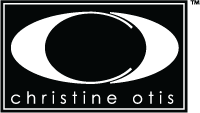Some backwards movement can get complex.
A great example is the movie, Memento. Released in 2000, it was written and directed by Christopher Nolan, and was an adaptation of Johnathan Nolan’s short story Memento Mori.
The movie hit upon something that is difficult to do, but Nolan successfully achieved it.
I happened to be writing my own piece of backwards movement when that movie was released.
I was trying to figure out how to tell a story while it moved backwards in time, but was moving forward in plot.
An example of this concept is flashbacks.
How do you write a flashback in a dream, or a double flashback?
Another way to look at it:
How do you make the past… present?
Creativity comes alive in the thought process of that solution.
And here’s another solution to a problem posed to students at what is now called Drexel University.
Bar Codes
Those wonderful bars that appear on marketed goods, whether it is seen at the grocery store, book store or when buying an electronic item, they are very much a part of the marketed product. I’m fascinated about how the idea of the bar code was born, and this past week I found out how it came to be.
Norman Joseph Woodland, was the co-inventor of the bar code. His epiphany which led to the idea is wonderfully delicious.
The question was posed how product information could be captured at the checkout. He went to Miami to take time off from school, and it was while he was away that he came up with an idea.
Woodland began with what he knew, which was Morse Code. While at the beach, he put dots and dashes into the sand. Being lost in thought and with his fingers still stuck in the sand, he moved his fingers towards himself, causing a series of parallel lines to appear in the sand.
That was his eureka moment in solving the problem.
He and his co-inventor, Bernard Silver, patented the bar code in 1958.
My eureka moment is solving the double flashback.
What’s yours?
